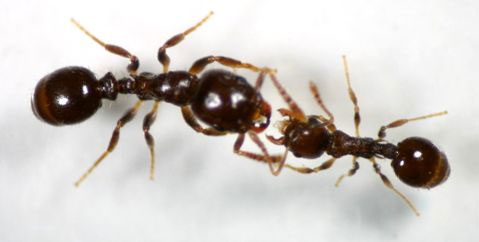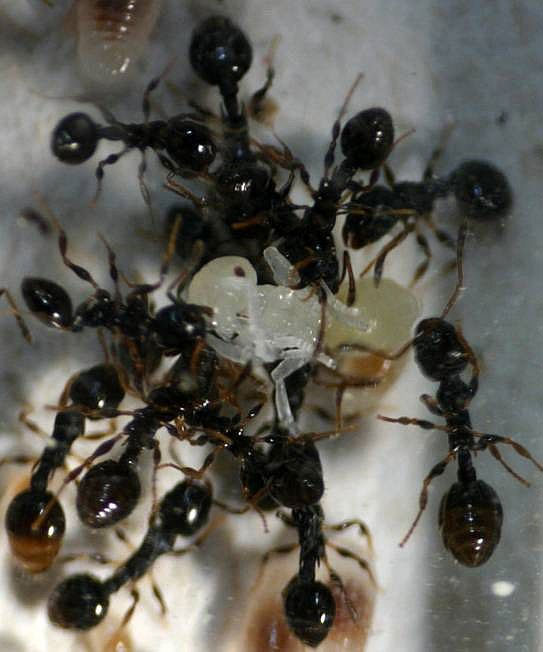Ants also know how to rebel against oppressors
A new study found that slave ants sometimes rebelled against the rulers and 'ripped apart,' seeing the children of the ants oppressing them.
The species of American ant antipersonnel Protomognathus americanus often raided the nest of a neighboring ant species (Temnothorax longispinosus) , killing mature individuals and capturing other young ants as slaves.
When returning to their nest, the invading ants will make slave ants give food, protect the nest and take care of their larvae.

A slave owner (left) is demanding an ant
Slave worker treats food. (Photo: Live Science)
Live Science page quoted researcher Susanne Foitzik from Johannes Gutenberg University (Germany), saying: ' Maybe, at first, slave ants were not aware of other species' larvae. However, when the larvae develop into nymphs, 'nanny' ants have discovered another species based on the epidermal signs, and become hostile to them.
The enslave ants either neglected the "slave "'s children or attacked the nymphs directly, often " tearing, braking " them. Ms. Foitzik's team observed that a large number of larvae of ants ' owners were killed by slave ants.

The "nanny" ants gather, attack the larval council of the slave owner. (Photo: Live Science)
Under normal conditions, larvae of P. americanus ants have an 85% chance of survival. However, the researchers found that this ratio decreased when slave ants took care of them. For example, in the ants in West Virginia (USA), only 27% of larvae survived, while in territories in New York and Ohio, this proportion was recorded as 49. % and 58%.
Because the phenomenon was discovered in various residential communities across the three states of the United States, the team believed that the rebellious behavior was common in the slave ants T. longispinosus. They claim that these destructive actions can reduce the power of slave-owners communities and prevent them from carrying out further attacks on T. longispinosus ants.
The whole study has just been published in the latest issue of Evolutionary Ecology magazine.
- Discover strange ants in the world
- Strange things about the ant world
- Why ants 'dominate' the world
- This is what happens when an ant bites you, no wonder it hurts so much
- Video: The ants are robbing the eggs of the same kind to raise and make
- Mysterious ants 'click' midnight bell
- Ants have known 'cultivation' since ... 60 million years ago
- Colonial colonial behavior changes after winning
- Experience of preventing and treating ants in three burning chambers
- England: Discovering ants is likely to cause house fires
- Some similarities between ants and people we don't know yet
- The mysteries of Argentinian ants are aggressive
 Why do potatoes have eyes?
Why do potatoes have eyes? 'Tragedy' the world's largest carnivorous life: Death becomes ... public toilet
'Tragedy' the world's largest carnivorous life: Death becomes ... public toilet Tomatoes were once considered 'poisonous' for 200 years
Tomatoes were once considered 'poisonous' for 200 years Detecting microscopic parasites on human face
Detecting microscopic parasites on human face